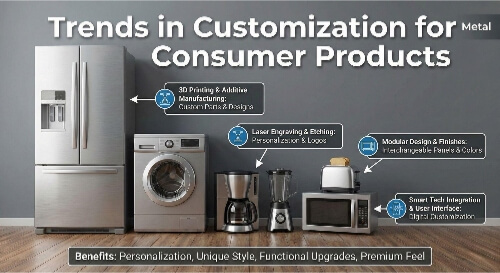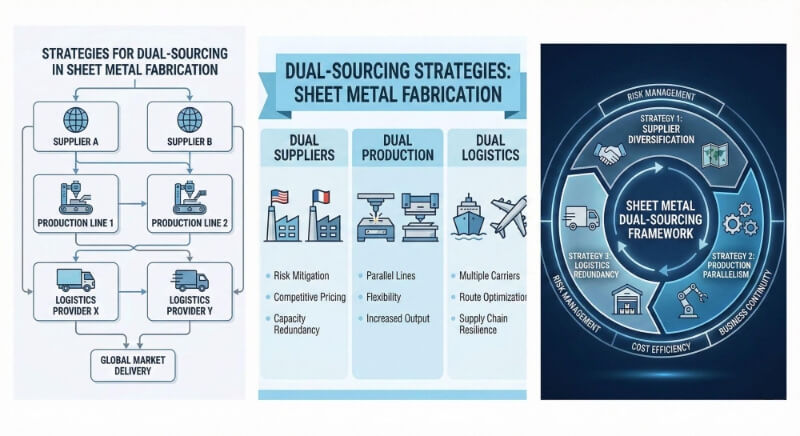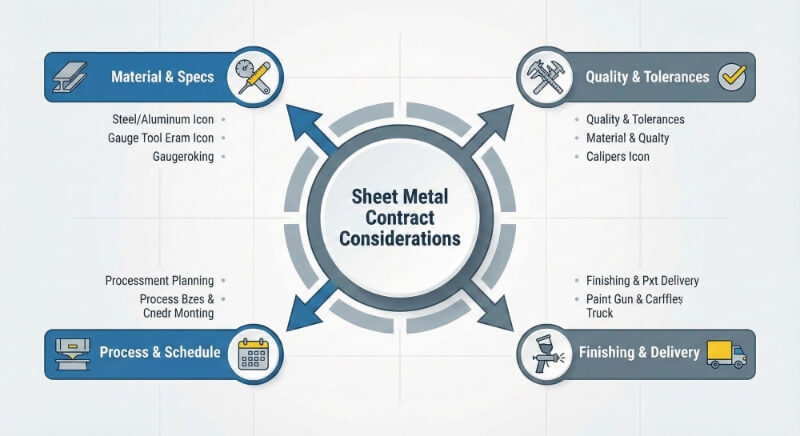Do you know which manufacturing process is better for your product: subtractive or additive? Understanding the differences between these two processes will help you make informed decisions about your next project. We’ll explore their differences and see how they can affect your production goals.
Subtractive manufacturing involves removing the material from a block to achieve a specific shape. On the contrary, additive manufacturing creates objects layer-by-layer, usually using 3D printer technology. Each has its strengths–subtractive offers precision, while additive allows for complex geometries with less material waste.
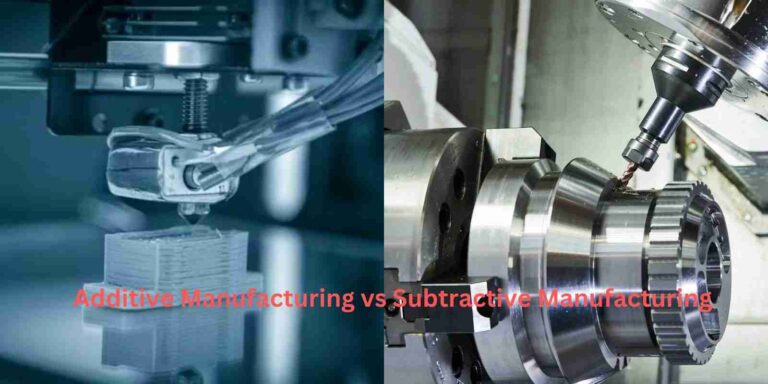
Additive Manufacturing Basics
Additive Manufacturing, or AM, is often synonymous with 3D Printing. This method creates complex, lightweight, and detailed structures by building up digital designs layer by layer.
What is an Additive Manufacturing Process?
This process starts with a digital design, typically created using Computer-Aided Design software. The model is then cut into thin layers and printed individually to create a three-dimensional object. The layers are fused until the object is completed.
Types of Additive Manufacturing Technologies
Additive Manufacturing comprises several technologies, each suited to different materials and applications.
Stereolithography (SLA)
SLA technique uses an ultraviolet laser to solidify the photopolymer layer by layer. This technique is known as a high-precision and smooth finish.
Fused Deposition Modeling
FDM is a process that involves extruding filaments of thermoplastic through a heated nozzle and laying material down in layers.
Selective Laser Sintering
SLS uses a laser to sinter the powdered materials, forming a solid structure.
Direct Metal Laser Sintering
DMLS is similar to SLS because it uses laser sintering powdered metals to create dense and complex metal components.
Subtractive Manufacturing Basics
Subtractive manufacturing involves hollowing out or removing material sections from a solid object, like metal or plastic, to create a final product.
What is the Subtractive Manufacturing Process?
The process begins with a solid rod, sheet, or block of material, which is then precisely shaped using different cutting and milling instruments. Computer Numerical Control machines are often used to guide these tools. This allows for high precision, efficiency, and repeatability.
Common Techniques
Subtractive Manufacturing encompasses a variety of techniques that are each tailored to specific materials and applications.
CNC Machining
CNC Machining uses computer-controlled machines to remove material with high precision.
Laser Cutting
Laser cutting is cutting or engraving a material using a laser beam.
Milling
The milling process involves rotating cutting instruments that remove material. Milling can create many features, including contours, slots, and holes.
Lathe
The material is shaped by rotating it against a cutting instrument. This technique is used primarily for cylindrical parts and produces precise, consistent results.
Electrical Discharge Machining (EDM)
EDM removes material using electrical discharges. This method is highly effective when working with complex or intricate materials.
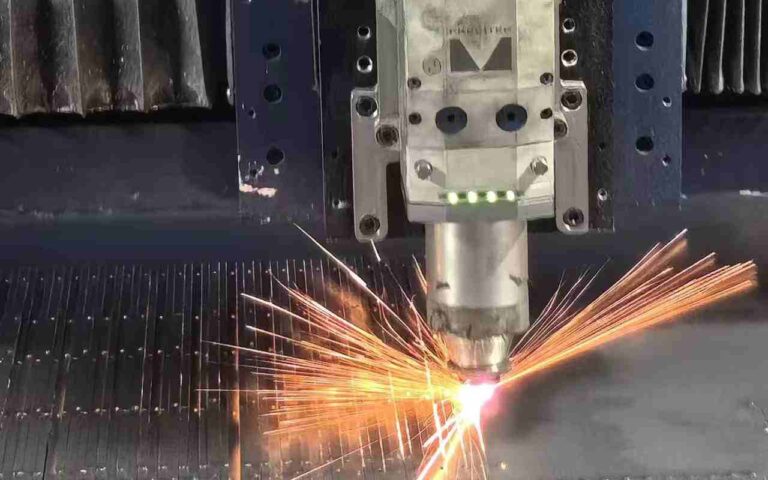
Advantages and disadvantages of additive manufacturing
Benefits
- Reduced Waste: Additive manufacturing builds parts layer-by-layer, reducing waste material significantly compared to traditional manufacturing methods.
- Reduced tooling: Using this method, you will need fewer tools. You won’t require any custom tooling. This reduces setup time and costs.
- On-Demand Production: Allows production as required, without extensive inventories. This reduces storage costs and overhead.
- Lead Time: Accelerates development by allowing rapid prototypes and faster adjustments.
- Sustainability: Using biodegradable material and less waste will improve the environmental friendliness of manufacturing processes.
- Complex Parts: Facilitates the creation of intricate and complex designs that are difficult to achieve using subtractive methods.
Disadvantages
- Surface Finishes: The smoothness and precision required for subtractively manufactured parts often require additional finishing processes.
- Production Volume: Although suitable for prototyping, small batches and scaling up to large production volumes can be less cost-effective.
- Quality control: Variability can lead to inconsistent production, which requires stringent quality controls.
- Material limitation: Only a limited number of materials can be used for additive manufacturing.
Subtractive manufacturing: Advantages and disadvantages
Benefits
- High Accuracy: Subtractive Methods are known for precision and their ability to achieve tighter tolerances.
- Surface Finish: Provides excellent surface finishes straight from the machine. This eliminates the need for additional processing.
- Complexity: Capable of producing complex features, including internal structures and undercuts, with precision control.
- Speed: Deductive manufacturing is faster for specific materials and parts geometries.
- Versatility: It can be used with many materials, including metals and plastics.
- Modifications: Modifications are accessible, especially if you start with a solid block.
Disadvantages
- Waste: This is characterized by the removal of significant quantities of material. This leads to a higher waste rate in raw materials.
- Costs: High machinery, tools, and setup costs for low-volume production.
- Tool Wear: Tools become worn out by mechanical processes, requiring replacement and maintenance.
- Safety: The removal of material and sharp tools can cause safety hazards.
- Material dust: Dust and particles produced by the material may require unique extraction solutions to maintain a safe working environment.
- Energy Consumption: In general, additive methods consume more energy per production unit.
Additive Manufacturing vs Subtractive Manufacturing: Applications
Additive Manufacturing: Applications
Additive Manufacturing suits specific industries and applications that require customization, complexity, and prototyping.
- Prototyping: Quickly iterate design concepts without expensive tooling
- Custom Medical Devices: Production of bespoke dental and prosthetic devices for individual patients.
- Aerospace components: Complex, lightweight components that reduce aircraft weight and increase fuel efficiency.
- Automotive Industry: Customized components for limited-run models and complex components that are too intricate for conventional manufacturing.
- Jewelry & Art: Enables intricate patterns and designs that are impossible or difficult to achieve with traditional methods.
- Architecture: Complex architectural components and models that require fine detail.
Subtractive manufacturing: Applications
Subtractive Manufacturing is the ideal solution for applications that require high precision, superior surface finishes, and material properties, which are difficult to achieve using AM.
- Mass production: Produce large volumes of parts efficiently with consistency in quality and precision.
- Industrial machinery: Components requiring durability and high tolerance, such as gears, fixtures, and other components.
- Consumer Electronics Parts such as casings and mountings that meet high aesthetic and functional standards.
- Automotive Production: High-strength parts for automobile use, such as engine components and structural members.
- Aerospace Industry: High-strength, critical components like landing gear assemblies and blades.
- Medical Implants: Titanium Implants for Orthopedics that require excellent material properties.
Compare Additive Manufacturing vs Subtractive Manufacturing
Here is a table that quickly compares Additive Manufacturing and Subtractive Manufacturing.
| Feature | Additive Manufacturing | Subtractive Manufacturing |
|---|---|---|
| Materials Used | Plastics, metals, ceramics, resins | Any solid material, predominantly metals |
| Waste Generation | Minimal, builds from nothing | High, as material is removed from a larger block |
| Tooling Costs | Low to none, as no special tools are required | High, due to need for specific cutting tools |
| Complexity of Parts | High, can create complex geometries easily | Limited to accessible areas by cutting tools |
| Production Speed | Slower for bulk production, faster for prototypes | Faster for high-volume runs, slower for prototypes |
| Finish Quality | May require post-processing for smooth finish | High-quality finishes achieved directly |
| Cost Effectiveness | More cost-effective for small batches or custom items | More cost-effective for large production runs |
| Precision | Less precise, improvements ongoing | Highly precise, suitable for critical parts |
| Flexibility | High, easy to change designs digitally | Low, requires retooling for design changes |
| Energy Consumption | Lower in many cases, but depends on the material and machine | Generally higher due to tool operation and material waste |
| Ideal Applications | Prototyping, custom medical devices, aerospace parts | Mass production, industrial parts, consumer goods |
Choose between Additive Manufacturing or Subtractive Manufacturing
When Should You Use Additive Manufacturing Technology?
Additive Manufacturing is the best solution in many scenarios.
- Rapid prototyping: AM is an excellent tool for rapid prototyping. It allows you to make changes and iterations without changing the tools.
- Complex Geometries: AM excels in producing parts with intricate or complex geometries.
- Customization: AM offers the flexibility you need without adding any additional costs.
- Weight reduction: In industries such as aerospace and automotive, weight reduction can significantly impact performance and efficiency.
- Tooling & Fixtures: Am can quickly create specialized tooling & fixtures.
When Should You Use Subtractive Manufacturing Methods?
Subtractive Manufacturing is the preferred method in these circumstances.
- High Volume Production: In large production runs, SM can be more cost-effective and efficient due to its faster removal rates of material and reduced waste.
- Material properties: SM is often more effective when material properties are needed.
- Surface finish and precision: SM is usually superior if a part is required to have a high-quality surface finish with tight tolerances.
- Simplicity & Speed for Certain Designs: SM is faster at setting up and completing parts with simple geometrical complexity.
- Significant Components: SM can now handle substantial components more efficiently.
Cost of Additive Manufacturing vs Subtractive Manufacturing
In comparing costs between Additive Manufacturing and Subtractive Manufacturing, several factors affect the total cost of each method. To help you understand the financial impact of each method, here’s a breakdown:
Initial Investment
- Additive manufacturing: In general, subtractive tools require a higher initial investment.
- Subtractive manufacturing: CNC and other subtractive machines can be expensive, especially for high precision or large-scale capabilities.
Material Costs
- Additive manufacturing: The cost per unit material can be higher due to the unique materials needed (e.g., metal powders and specific polymers). It can also reduce waste costs because it is more efficient in using materials.
- Subtractive manufacturing: Although bulk materials may cost less per unit, a significant amount of material waste must be considered in the total cost.
Labor Costs
- Additive manufacturing requires less labor because machines can handle most of the process by themselves once the print is started.
- Subtractive manufacturing requires skilled labor for the operation of machinery, setups, and continuous operations.
Operating Costs
- Additive manufacturing: Operational costs can be reduced since manufacturing involves fewer steps.
- Subtractive manufacturing: Higher energy consumption due to the nature of the cutting processes, drilling, or milling. In addition, the cost of replacing tools and tool wear adds to operating costs.
Production Volume and Speed
- Additive manufacturing: More economical for small or complex production runs.
- Subtractive manufacturing: More economic at scale as the cost per item decreases dramatically with more significant production volumes.
Lead time and Flexibility
- Additive manufacturing: Can offer shorter lead times and adapt quickly to design changes without adding additional costs.
- Subtractive manufacturing: Lead time can be longer when setting up a new process or when design changes require new fixtures or tooling.
Costs in the Long-Term
- Additive manufacturing: The capability to produce lightweight structures with minimal waste can save money over time.
- Subtractive manufacturing: Offers durability, reliability, and consistency, especially in high-volume runs. This can reduce production costs for standard products over the long term.
Conclusion
The specific requirements of your project will determine whether you choose Additive Manufacturing or Subtractive Manufacturing. AM is ideal for complex geometries, customization, and low-volume production. It offers flexibility and efficiency with design changes while minimizing waste. This is ideal for aerospace, medical, and automotive industries, where innovation is crucial.
SM is the best in large-scale production. It offers unmatched precision, consistency, and cost-effectiveness. It is better suited for projects that require tighter tolerances and produces parts with superior surfaces.
Do you need a reliable sheet metal parts manufacturer? Shengen is the place to go. We specialize in sheet metal laser cutting, bending, surface finish, and CNC Machining. Reach out to Shengen Today and seek help from professionals!
FAQs
What is the best method for rapid prototyping?
Additive Manufacturing is better for rapid prototyping. It allows quick design iterations without having to change tooling or setup. AM can produce parts directly from digital designs, reducing the time between design and prototype.
What are the costs associated with each method?
Subtractive and Additive Manufacturing costs vary based on scale and complexity. AM is typically more cost-effective and has lower initial costs for smaller batches or complex custom parts. SM is more expensive initially due to the initial investment in equipment and tools. Still, it becomes cheaper with higher production volumes because of efficiencies in materials and faster production rates.
What is the environmental impact of additive and subtractive manufacturing?
Additive Manufacturing (AM) is often considered more environmentally friendly than Subtractive Manufacturing. AM can reduce waste by only using the materials necessary to make a part. It also uses recycled materials.
More Resources:
3D Printing Materials – Source: Formlabs
Sustainable Practices in Manufacturing – Source: Precog
Comparative Guide to Manufacturing Technologies – Source: Treatstock
Hey, I'm Kevin Lee

For the past 10 years, I’ve been immersed in various forms of sheet metal fabrication, sharing cool insights here from my experiences across diverse workshops.
Get in touch

Kevin Lee
I have over ten years of professional experience in sheet metal fabrication, specializing in laser cutting, bending, welding, and surface treatment techniques. As the Technical Director at Shengen, I am committed to solving complex manufacturing challenges and driving innovation and quality in each project.

